
The University of Florida is a public land-grant research university in Gainesville, Florida. It is a senior member of the State University System of Florida, traces its origins to 1853, and has operated continuously on its Gainesville campus since September 1906.

Kathryn Chicone Ustler Hall is a historic building on the campus of the University of Florida (UF) in Gainesville, Florida. It was designed by William Augustus Edwards in the Collegiate Gothic style and opened in 1919 as the University Gymnasium. In that capacity, the building was the first home of the Florida Gators men's basketball team, and it continued to serve as the home court for most of the university's indoor sports programs until the Florida Gymnasium opened in the late 1940s. The university became co-educational at about the same time, and the building was rechristened the Women's Gymnasium and was repurposed as a recreation center for the school's many new female students. On June 27, 1979, it was added to the U.S. National Register of Historic Places.

Ximenez-Fatio House Museum is one of the best-preserved and most authentic Second Spanish Period (1783-1821) residential buildings in St. Augustine, Florida. In 1973, it was added to the National Register of Historic Places. It was designated a Florida Heritage Landmark in 2012.
Michael V. Gannon was a historian, educator, priest, and war correspondent.

The University of Florida Digital Collections (UFDC) are supported by the University of Florida Digital Library Center in the George A. Smathers Libraries at the University of Florida. The University of Florida Digital Collections (UFDC) comprise a constantly growing collection of digital resources from the University of Florida's library collections as well as partner institutions. Founded in April 2006, UFDC has added over 622,114 items - books, newspapers, oral histories, videos, photos, data sets, and more - with over 14 million pages.
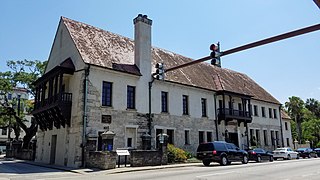
Government House, also known as Governor's House, is located at 48 King Street in St. Augustine, Florida, adjacent to the Plaza de la Constitución. The building, constructed of coquina, served as the governor's official residence from c. 1710 during the First Spanish Period (1565–1763), throughout the British Period (1763–1784), and until 1812 in the Second Spanish Period (1784–1821). Governor Gonzalo Méndez de Canzo was the first governor to build his residence on the present Government House site in 1598.
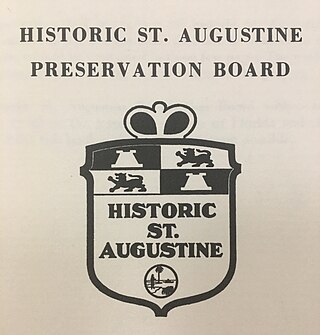
The Historic St. Augustine Preservation Board (HSAPB) was a state agency in Florida that participated in the restoration and preservation of historic buildings in St. Augustine, Florida from 1959 to 1997. Created in 1959 by Governor LeRoy Collins, the agency acquired, restored, and preserved historic structures in St. Augustine until its abolishment by the State of Florida in June 1997.

The Old Blacksmith Shop is located at 26 Charlotte Street in St. Augustine, Florida. It is a reconstruction of an outbuilding located on the site during the British possession of Florida.

The Ribera House is located at 22 St. George Street in St. Augustine, Florida. It is a reconstruction of the home that originally stood on this site during the First Spanish Period (1565-1764) of St. Augustine.

The Triay House is a historic property located at 31 St. George Street in St. Augustine, Florida. It is a reconstruction of the First Spanish Period structure that stood on the site.

The Sánchez de Ortigosa House is located at 60 St. George Street, St. Augustine, Florida. It is a reconstruction of a home dating from the First Spanish Period (1565-1763) that stood on this site.
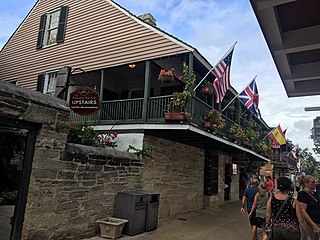
The Arrivas House is located at 46 St. George Street, St. Augustine, Florida. It was the first completed restoration project of the Historic St. Augustine Preservation Board (HSAPB), and was named after early owner Don Raimundo de Arrivas.
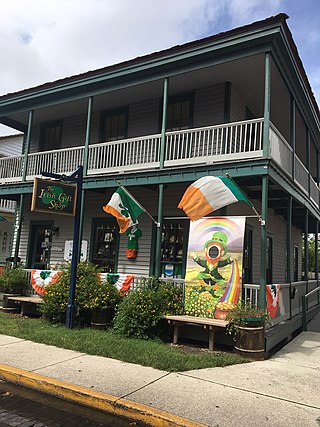
The Cerveau House is located at 26 Cuna Street in St. Augustine, Florida. It is an original house, constructed in the 19th century.
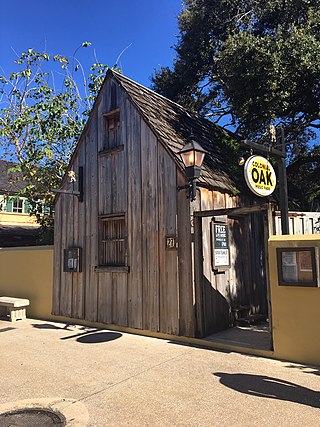
The Gómez House, located at 27 St. George Street in St. Augustine, Florida, is a reconstruction of a simple wooden house dating back to Florida’s First Spanish Period (1565-1763).
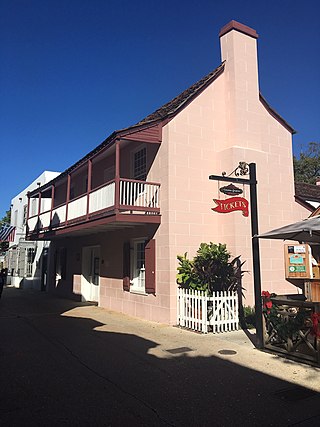
The De Mesa-Sánchez House is located at 23 St. George Street in St. Augustine, Florida. It is a restoration of a home dating back to East Florida's First Spanish Period.
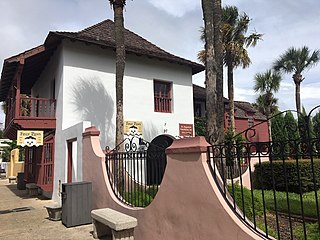
The Marin-Hassett House is located at 97 St. George Street in St. Augustine, Florida. It is reconstructed on its foundations that date to St. Augustine's First Spanish Period.
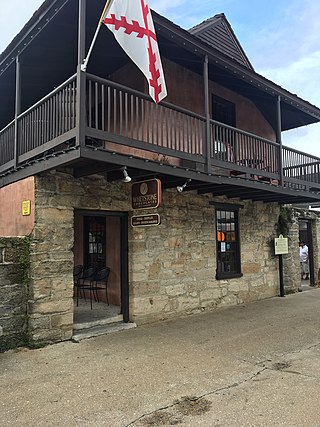
The Salcedo House and Kitchen are located at 42 and 42 1/2 St. George Street, in St. Augustine, Florida. They are reconstructions of 18th century structures that stood on these sites in St. Augustine's First Spanish Period (1565–1763).
Earle W. Newton, II (1917–2006) was a historian, preservationist, publisher, educator, and art benefactor.
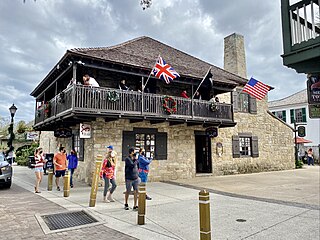
The Casa del Hidalgo is located at 35 Hypolita Street, at the southeast intersection of Hypolita and St. George Streets in downtown St. Augustine, Florida. It was constructed in 1965 and housed the Spanish government's official exhibition and cultural center.

The Paredes-Dodge House is located at 54 St. George Street in St. Augustine, Florida. The one and a half story structure was built between 1803 and 1813, and is one of the only surviving colonial structures in St. Augustine.


















